Instagram advertising has evolved from a simple photo sharing platform enhancement to a sophisticated revenue-generating machine. With 2 billion monthly active users and 85% of consumers taking action after seeing products on Instagram. Mastering this platform is not optional anymore and it’s essential.This essential guide tells everything you need to dominate Instagram ads in 2025. You will discover proven strategies that transform casual web browsers into loyal customers. To optimize your ad budget for maximum returns. And leverage cutting-edge features most marketers completely ignore.
Instagram Advertising Fundamentals: What Actually Driven Results
Why Instagram Ads Exceed Marketing
Instagram marketing delivers results that advertising simply cannot match. Consider these compelling statistics:
- 78% of shoppers discover brands through Instagram content
- 70% use Instagram to guide purchasing decisions
- 50% shop weekly on Instagram, making it a consistent revenue driver
- 68% of marketers feel confident in Instagram’s ROI potential
The platform’s visual-first approach aligns perfectly with how modern consumers process information. Unlike text heavy Facebook posts or professional LinkedIn content. Instagram ads tap into emotional decision making through stunning visuals and authentic storytelling.
Social media advertising on Instagram also benefits from worldly algorithm targeting. The platform analyzes user behavior patterns. Which engage history and purchase intent signals to deliver your message precisely when prospects are most receptive.
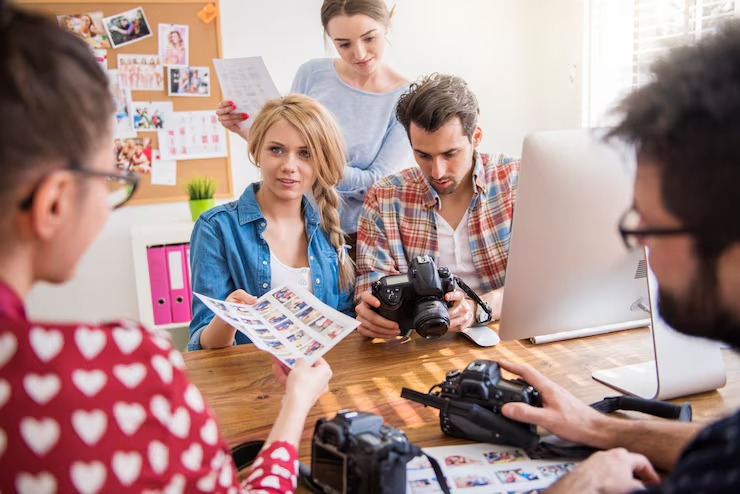
The Instagram-Meta Ecosystem: How It Powers Your Ad Success
Meta Ads Manager serves as the control center for your entire advertising strategy. This unite platform connects Instagram, Facebook, Messenger and Audience Network that create unparalleled reach opportunities.
When you launch an ad campaign through Meta’s ecosystem, your content automatically optimizes across multiple touchpoints:
| Platform | Average CPC | Primary Benefit | Best Use Case |
| $0.01–$0.25 | Visual storytelling | Brand awareness, product discovery | |
| $0.26–$0.50 | Detailed targeting | Lead generation, conversions | |
| Messenger | $0.15–$0.35 | Direct communication | Customer service, personalized offers |
This social media management approach ensures your budget works harder across multiple channels simultaneously.
Psychology Behind Instagram Ad Engagement
Instagram advertising success stems from understanding user psychology. Not like other platforms where people consume content passively. Instagram users actively seek inspiration, entertainment and shopping opportunities.
The platform’s algorithm rewards engagement through several psychological triggers:
- Visual hierarchy: Users scan images in predictable patterns
- Social proof: High engagement rates signal content quality
- FOMO (Fear of Missing Out): Stories format creates urgency
- Discovery behavior: Users explore new brands through hashtags and Explore Ads
Smart advertisers leverage these psychological principles to create high-quality photos and high-quality videos that naturally encourage interaction.
Instagram Ad Mechanics: The Behind-the-Scenes Reality
Algorithm Secrets: How Instagram Decides Who Sees Your Ads
Instagram’s algorithm targeting operates on a complex machine learning system that evaluates hundreds of variables before showing your ad to users. The primary factors include:
User Interest Signals:
- Recent engagement patterns with similar content
- Time spent viewing related posts
- Previous interaction with your brand management content
- Shopping behavior and purchase intent indicators
Content Quality Metrics:
- Relevance Score based on expected user response
- Creative performance compared to similar ads
- Call-to-Action (CTA) effectiveness rates
- Overall user feedback and hiding rates
Competitive Landscape:
- Auction competition for your target demographics
- Bid strategy compared to similar advertisers
- Daily budget allocation and spending patterns
These mechanics help you run Instagram ads that work with the algorithm rather than against it.

Those Models That Actually Matter in 2025
META Conversions API revolutionized how we track Instagram advertising performance. This server-side tracking solution addresses iOS 14.5+ privacy changes while providing more accurate ROI measurements.
The most effective attribution models for 2025 include:
7-Day Click Attribution: Tracks conversions within seven days of ad interaction. 1-Day View Attribution: By measuring actions taken within 24 hours of seeing your ad. Incrementality Testing: Determines true advertising strategy impact versus organic growth.
Quality Score vs. Bid Strategy: The Winning Formula
Instagram evaluates your ad campaigns using a quality score system similar to Google Ads. Higher scores reduce your Cost Per Click (CPC) and increase reach potential.
Quality Score Components:
- Ad Relevance: Your content matches user intent.
- Landing Page Experience: Post click user satisfaction.
- Creative Quality: Visual appeal and professional production values.
- Expected Click Through Rate: Which is based on historical performance.
Winning Bid Strategies:
- Spend Based Bidding: Optimal for new accounts building data.
- Goal Based Bidding: Best for established campaigns with clear objectives.
- Real Time Adjustments: The manual optimization for experienced advertisers.
4 Proven Instagram Ad Creation Methods (Step by Step)
Method #1: Native Instagram Making
Instagram built in promotion tools work perfectly for quick campaign launches and simple brand awareness objectives. This approach suits small businesses and content creators. Who needs immediate results without complex setup.
Mobile-First Creation Process:
- Select High Performing Content: By choosing posts with above average engagement rates
- Define Clear Objectives: To focus on reach, engagement or website visits
- Set Precise Budgets: Price start with $5-10 daily for testing
- Monitor Performance: Check Instagram Analytic within 48 hours
Quick Launch Strategies:
- Use high-quality photos already performing well organically
- Target broad audiences initially then narrow based on results
- Include clear call-to-action elements in your visual content
- Test Stories Ads format for maximum mobile visibility

Method #2: Facebook Integration Approach
This method maximizes your existing Facebook marketing investments while expanding into Instagram advertising. It is particularly effective for businesses already successful with Facebook campaigns.
Cross Platform Content Optimization:
- Adapt Facebook ad copy for Instagram first environment
- Resize images to Instagram optimal dimensions (1080×1080 for feed, 1080×1920 for Stories)
- Modify call to action buttons for mobile user behavior
- Leverage Facebook Custom Audiences for Instagram targeting
Audience Sync Techniques:
Your Facebook audience targeting data transfers seamlessly to Instagram campaigns. This includes:
- Lookalike Audiences based on existing customers
- Website visitors through Facebook Pixel integration
- Email subscribers and CRM contacts
- Previous social media engagers across both platforms
Method #3: Meta Ads Manager Mastery (Pro Level Control)
Meta Ads Manager provides the most sophisticated Instagram advertising capabilities. This approach suits businesses ready to invest in comprehensive social media advertising strategies.
Advanced Targeting Configurations:
The platform offers three primary audience types:
Core Audiences: Target users based on demographics, interests and behaviors Custom Audiences. Reach people who already know your business Lookalike Audiences. Find new customers similar to your best existing ones
Campaign Structure Architecture:
Campaign Level: Overall objective and budget
├── Ad Set Level: Audience, placement, and schedule
├── Ad Level: Creative assets and copy
├── Ad Level: A/B test variations
└── Ad Level: Format-specific content
Method #4: Third Party Tool Integration
Adventure level Instagram marketing often requires additional tools for social media management and advanced analytics.
Automation Workflows:
- Scheduled ad campaigns based on inventory levels
- Dynamic product ads that update automatically
- A/B testing systems with statistical significance
- Cross-platform social media audit capabilities
Multi-Account Management:
Professional agencies and large brands benefit from centralized dashboards that manage multiple Instagram accounts. While maintaining brand management consistency.
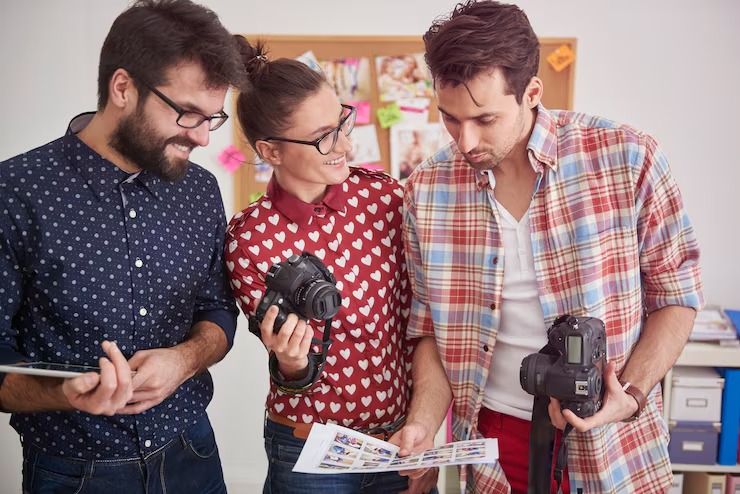
Instagram Advertising ROI: The Numbers That Matter
Real Cost Breakdowns by Industry (2025 Benchmarks)
Instagram advertising costs vary significantly by industry, competition levels and campaign objectives. Your expectations are here:
| Industry | Average CPC | Average CPM | Conversion Rate |
| E-commerce | $0.15-$0.30 | $5.50-$8.00 | 2.8% |
| SaaS/Tech | $0.25-$0.45 | $8.00-$12.00 | 1.9% |
| Fashion | $0.12-$0.25 | $4.50-$7.50 | 3.2% |
| Food/Beverage | $0.18-$0.35 | $6.00-$9.50 | 2.1% |
| Fitness | $0.22-$0.40 | $7.50-$11.00 | 2.5% |
These advertising pricing benchmarks help you set realistic budget expectations and identify optimization opportunities.
Hidden Costs Nobody Talks About
Beyond your ad budget, several hidden expenses impact your true Instagram advertising investment:
Creative Production Costs:
- Professional photography: $500-2000 per shoot
- Video production: $1000-10000 per campaign
- Graphic design: $50-200 per ad variant
- Copywriting: $100-500 per campaign
Management and Optimization:
- Social media management tools: $50-500 monthly
- Analytics and reporting software: $100-1000 monthly
- Agency fees: 10-20% of ad spending
- Internal team time: $2000-8000 monthly
Cost Optimization Strategies That Cut Spend by 40%
Smart marketers reduce Instagram advertising costs through proven optimization techniques:
Audience Rarefaction:
- Start broad, then narrow based on performance data
- Exclude low-converting demographics after sufficient testing
- Use precise audience targeting only after gathering insights
- Implement Lookalike Audiences based on high-value customers
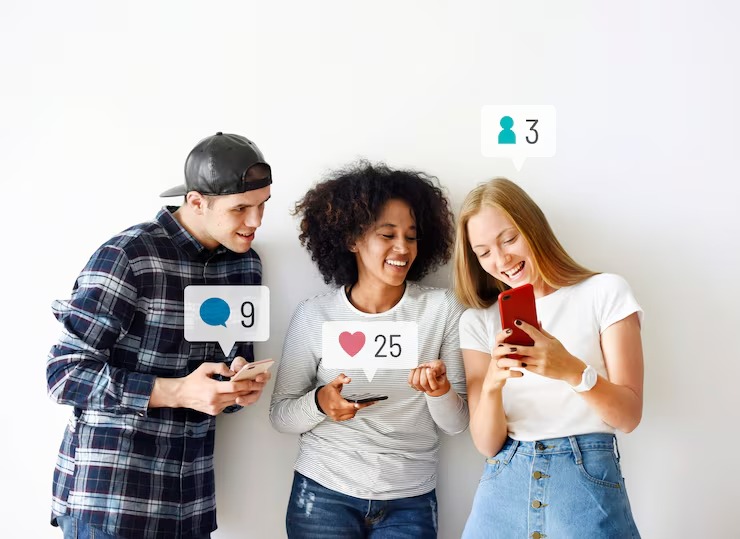
Creative Optimization:
- Test multiple ad formats simultaneously
- Refresh creative assets before ad fatigue sets in
- Use user-generated content to reduce production costs
- Implement A/B testing for statistically significant results
Bid Strategy Enhancement:
- Begin with automatic bidding for data collection
- Switch to manual bidding once you understand performance patterns
- Adjust bids based on Cost Per Engagement (CPE) goals
- Monitor Cost Per Mille (CPM) trends for budget allocation
Instagram vs. TikTok vs. Facebook: The Truth About Platform ROI
Platform advertising performance varies dramatically based on your target audience and business objectives:
| Platform | Strength | Weakness | Best For |
| Visual storytelling, shopping integration | Limited text space | E-commerce, lifestyle brands | |
| TikTok | Viral potential, younger audiences | Less sophisticated targeting | Entertainment, trendy products |
| Detailed targeting, mature platform | Declining organic reach | B2B, older demographics |
Instagram advertising typically delivers the highest ROI for visual brands targeting millennials and Gen Z consumers.
Instagram Ad Formats: Matching Format to Customer Journey
Photo Ads: When Static Images Win
Photo ads remain Instagram’s most versatile and cost effective format. They work exceptionally well for brand awareness campaigns and product showcases that don’t require motion or complex storytelling.
Best Practices:
- Use high-quality photos with professional lighting
- Include faces when possible (increases engagement by 38%)
- Apply consistent brand colors and styling
- Keep text overlays minimal (under 20% of image area)
Optimal Specifications:
- Dimensions: 1080×1080 pixels (square) or 1080×1350 (portrait)
- File size: Under 30MB
- Format: JPG or PNG
- Caption length: 125 characters for maximum visibility
Video Ads: The 3-Second Rule and Beyond
Video ads capture attention more effectively than static content, but require strategic planning to maintain viewer interest beyond the critical first three seconds.
Performance Statistics:
- Video ads receive 38% higher engagement than photo ads
- Users watch an average of 10 seconds before scrolling
- Motion graphics increase brand recall by 65%
- Animations improve click-through rates by 27%
Creation Guidelines:
- Hook viewers within the first three seconds
- Design for sound off viewing (85% watch without audio)
- Include captions or text overlays for clarity
- End with compelling call to action elements
Stories Ads: Capturing the Ephemeral Moment
Stories ads leverage FOMO psychology and full-screen mobile experiences to drive immediate action. This format works particularly well for time-sensitive offers and behind-the-scenes content.
Strategic Advantages:
- 58% higher engagement rates than feed ads
- Full-screen real estate without competition
- Swipe-up functionality for direct traffic
- Integration with Instagram Shop for seamless purchasing
Reels Ads: Riding the Short-Form Wave
Reels ads tap into Instagram’s algorithm priority for short-form video content. The platform actively promotes Reels to compete with TikTok making this format highly cost effective.
Performance Benefits:
- 67% higher organic reach than standard video posts
- 22% more engagement than regular video ads
- Lower CPC due to algorithm favoritism
- Higher discoverability through Explore page placement

Shopping Ads: Direct-to-Purchase Optimization
Shopping ads transform Instagram advertising into a seamless e-commerce experience. Users can browse products, view prices, and complete purchases without leaving the platform.
Conversion Optimization:
- Product tags enable direct purchasing
- Instagram Shop integration streamlines checkout
- Dynamic product ads showcase relevant inventory
- Abandoned cart retargeting increases ROI
Carousel Ads: Storytelling That Converts
Carousel ads allow up to 10 images or videos in a single ad unit, perfect for showcasing multiple products or telling comprehensive brand stories.
Strategic Applications:
- Product catalogs with multiple variants
- Step-by-step tutorials or processes
- Before/after transformations
- Brand storytelling across multiple scenes
Collection Ads: The Mobile Storefront Experience
Collection ads combine video or image headers with product catalogs, creating immersive shopping experiences optimized for mobile browsing.
User Experience Benefits:
- Instant loading for improved engagement
- Native shopping feel within Instagram
- Reduced friction between discovery and purchase
- Higher conversion rates than traditional formats
Explore Ads: Intercepting Discovery Behavior
Explore ads appear within Instagram’s discovery section, reaching users actively seeking new content and brands. This placement targets high-intent audiences during natural exploration behavior.
Targeting Advantages:
- Reach users outside your current follower base
- Intercept competitors’ audiences during research
- Lower CPM due to less competition
- Higher brand awareness among new prospects
Advanced Instagram Advertising Strategies (Beyond the Basics)
Audience Layering: The 3-Tier Targeting System
Effective Instagram advertising requires sophisticated audience targeting that matches content to user intent and purchase readiness.
Cold Audience Acquisition: These prospects have never interacted with your brand but match your ideal customer profile:
- Interest targeting: Competitors, related brands, relevant topics
- Behavior targeting: Shopping patterns, device usage, travel habits
- Demographic targeting: Age, location, income, education
- Lookalike audiences: Based on existing customers or website visitors
Warm Audience Nurturing: Users who’ve shown initial interest but haven’t converted:
- Website visitors (last 30-180 days)
- Video viewers (25%, 50%, 75% completion rates)
- Engagement audiences (liked, commented, shared)
- Email subscribers who haven’t purchased
Hot Audience Conversion: High-intent prospects ready for purchase decisions:
- Abandoned cart visitors
- Product page viewers
- Previous purchasers (upsell/cross-sell)
- High-value Lookalike audiences
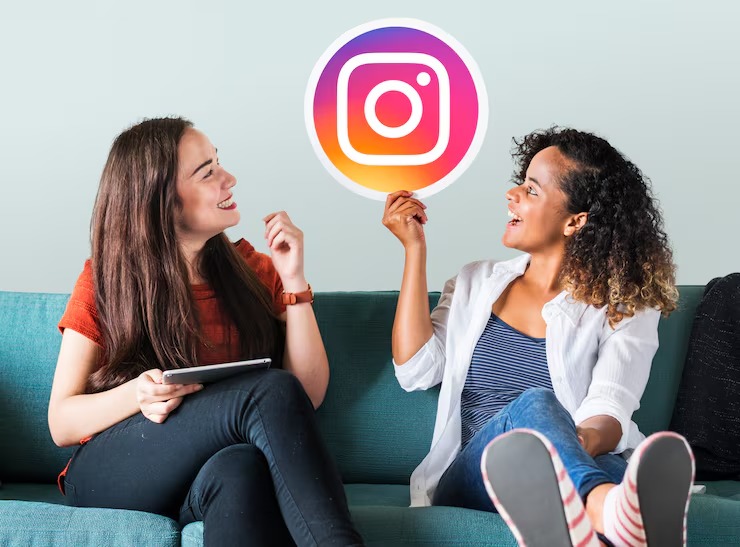
Creative Testing Framework (What Actually Moves Metrics)
A/B testing your Instagram ads requires systematic approaches that generate statistically significant results rather than random variations.
The 70/20/10 Creative Rule:
- 70%: Proven winners and safe variations
- 20%: Moderate risk creative experiments
- 10%: High-risk, potentially breakthrough concepts
Performance Prediction Models: Track leading indicators that predict campaign success:
- Click-through rates within first 24 hours
- Cost per engagement trends in initial hours
- Relevance scores compared to historical benchmarks
- Audience size and overlap percentages
Campaign Architecture for Scale
Successful Instagram advertising requires organized campaign structures that accommodate growth without losing performance clarity.
Account Structure Best Practices:
Account Level: Overall business objectives
├── Campaign Type 1: Brand awareness
│ ├── Ad Set: Cold audiences – Interests
│ ├── Ad Set: Cold audiences – Lookalikes
│ └── Ad Set: Warm audiences – Retargeting
├── Campaign Type 2: Conversions
│ ├── Ad Set: High-intent keywords
│ ├── Ad Set: Competitor audiences
│ └── Ad Set: Custom audiences
└── Campaign Type 3: Retention
├── Ad Set: Previous purchasers
├── Ad Set: Email subscribers
└── Ad Set: High-value customers
Budget Allocation Strategies:
| Campaign Type | Budget % | Primary KPI | Optimization Goal |
| Brand Awareness | 30% | Reach, CPM | Maximum people reached |
| Conversions | 50% | CPC, ROI | Cost per acquisition |
| Retention | 20% | Lifetime value | Repeat purchases |
Instagram Advertising Execution: The Step-by-Step Playbook
Post Boosting Strategy (When Simple Works Better)
Boosting Instagram posts offers the fastest path from organic content to paid promotions. This approach works particularly well for content creators and small businesses with limited advertising strategy experience.
Content Selection Criteria:
Choose posts that already demonstrate organic success:
- Engagement rates above your account average
- Comments indicating purchase interest or questions
- Saves and shares suggesting high value
- Visual content that represents your brand well

Audience Refinement Process:
- Start broad: Use Instagram’s automatic audience suggestions
- Add interests: Include 3-5 relevant interests without over-narrowing
- Set demographics: Age ranges, locations, and languages
- Exclude existing: Remove current followers to reach new prospects
Performance Monitoring Systems:
Track these metrics within 24-48 hours:
- Reach and impressions growth rates
- Cost per engagement compared to organic posts
- Website clicks and conversion tracking
- Audience insights for future targeting
Ads Manager Campaigns (Professional Implementation)
Meta Ads Manager provides comprehensive control over your Instagram advertising campaigns with advanced optimization features unavailable through basic boosting.
Campaign Objective Selection Matrix:
| Business Goal | Campaign Objective | Best Ad Formats | Success Metrics |
| Brand awareness | Reach | Photo ads, Video ads | CPM, reach |
| Lead generation | Lead generation | Carousel ads, Collection ads | Cost per lead |
| Website traffic | Traffic | Stories ads, Reels ads | CPC, sessions |
| Sales | Conversions | Shopping ads, Product ads | ROI, ROAS |
Audience Definition Workshop:
Create detailed buyer personas before launching campaigns:
Demographics: Age (25-45), Income ($50K+), Location (Urban areas) Interests: Relevant brands, hobbies, lifestyle choices Behaviors: Online shopping, device usage, travel patterns
Pain Points: Problems your product solves Goals: What customers want to achieve
Creative Asset Preparation:
Organize your creative materials for maximum campaign efficiency:
- High-quality photos: 5-10 variations per campaign
- Video content: 15-second, 30-second, and 60-second versions
- Ad copy: Headlines, descriptions, and call-to-action options
- Landing pages: Mobile-optimized pages matching ad content
Launch Checklist and Optimization:
Pre-Launch Review:
- [ ] Audience targeting doesn’t overlap more than 20%
- [ ] Budget allocation matches campaign priorities
- [ ] Creative assets follow Instagram specifications
- [ ] Conversion tracking properly configured
- [ ] Landing page loads in under 3 seconds
Post-Launch Optimization (Days 1-7):
- Monitor cost per click trends
- Adjust bid strategy based on delivery
- Pause underperforming ad sets
- Scale winning creative variations
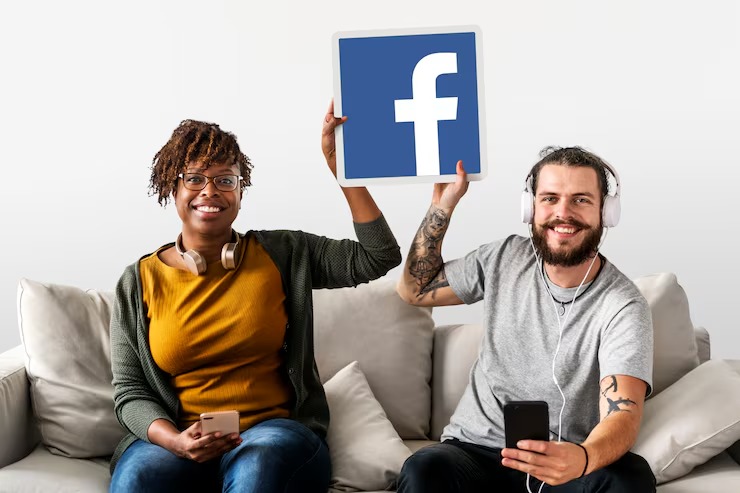
Facebook-Instagram Cross-Promotion (Unified Approach)
Integrated social media marketing maximizes your reach across Meta’s entire ecosystem while maintaining consistent brand management messaging.
Cross-Platform Synergies:
- Facebook Custom Audiences automatically include Instagram data
- Shared conversion tracking provides comprehensive attribution
- Unified creative assets reduce production costs
- Combined audience insights improve targeting precision
Nine Instagram Advertising Principles That Guarantee Results
Visual Psychology: Colors, Composition, and Conversion
Instagram’s visual-first platform demands understanding of color psychology and composition principles that drive user behavior and engagement.
Color Psychology for Conversions:
- Red: Creates urgency, perfect for limited-time offers
- Blue: Builds trust, ideal for financial and tech brands
- Green: Suggests growth and nature, works for health/wellness
- Purple: Implies luxury and creativity, suits premium brands
- Orange: Encourages action, excellent for call-to-action elements
Composition Rules That Work:
- Rule of thirds: Place key elements along intersecting lines
- Leading lines: Guide eyes toward important information
- Contrast: Ensure text stands out against background colors
- White space: Allow visual breathing room around key elements
Mobile-First Design Philosophy (The 6-Inch Screen Reality)
Instagram advertising success demands designing for mobile consumption first, then adapting for other devices.
Mobile Optimization Essentials:
- Text size: Minimum 14px for readability
- Button size: At least 44px for easy tapping
- Load time: Under 3 seconds or users abandon
- Vertical orientation: Design for portrait viewing
Touch-Friendly Elements:
- Large, easily tappable call-to-action buttons
- Thumb-friendly navigation placement
- Clear visual hierarchy for scanning
- Minimal text input requirements

Hook-Heavy Copywriting (The 2.3-Second Attention Window)
Instagram users scroll rapidly through feeds, giving your ad copy mere seconds to capture attention and generate interest.
Proven Hook Formulas:
- Question hooks: “Tired of [problem]?”
- Statistic hooks: “95% of people don’t know…”
- Story hooks: “Last week, I discovered…”
- Benefit hooks: “Get [desired outcome] in [timeframe]”
Copywriting Structure:
- Hook (first 5 words grab attention)
- Problem (identify pain point)
- Solution (present your offer)
- Proof (social proof or guarantee)
- Action (clear call-to-action)
Meta Conversions API Integration (iOS 14.5+ Survival Guide)
iOS privacy updates significantly impacted Instagram advertising tracking, making META Conversions API essential for accurate performance measurement.
Implementation Benefits:
- Improved conversion tracking accuracy
- Better ad targeting optimization
- Enhanced audience insights
- Future-proofed measurement strategy
Setup Requirements:
- Server-side tracking implementation
- Facebook Pixel and Conversions API integration
- Customer data hashing for privacy compliance
- Regular data quality monitoring
Algorithm Alignment Strategies (Working With, Not Against)
Instagram’s algorithm rewards content that generates meaningful engagement and keeps users active on the platform.
Algorithm-Friendly Practices:
- Post consistently during peak audience hours
- Respond quickly to comments and DMs
- Use relevant hashtags (5-10 per post)
- Share behind-the-scenes content
- Create content that encourages saves and shares
Engagement Optimization:
- Ask questions in captions to prompt comments
- Use emojis to increase visual appeal and relatability
- Share user-generated content to build community
- Host Instagram Live sessions for real-time interaction
Sound-Off Video Optimization (85% Watch Without Audio)
Video advertising on Instagram must work effectively without sound, as most users watch with audio disabled.
Silent Video Techniques:
- Captions or text overlays for all spoken content
- Visual storytelling that doesn’t require audio
- Strong opening frames to hook viewers immediately
- Clear visual cues for call-to-action elements
Text Integration Methods:
- Animated text reveals synchronized with video content
- Subtitle styling that matches brand aesthetic
- Key point highlights using contrasting colors
- Motion graphics that emphasize important information

Data-Driven Testing Methodologies (Statistical Significance)
Effective A/B testing requires scientific approaches that generate actionable insights rather than random results.
Testing Framework:
- Hypothesis formation: Predict expected outcomes
- Variable isolation: Test one element at a time
- Sample size calculation: Ensure statistical validity
- Duration planning: Run tests long enough for significance
- Results analysis: Draw conclusions and implement winners
Common Testing Variables:
- Ad formats (photo vs. video vs. carousel)
- Audience targeting (interests vs. behaviors vs. demographics)
- Headlines and call-to-action text
- Visual content styles and compositions
- Bid strategies and budget allocations
Seasonal Campaign Adaptation (Timing Market Shifts)
Instagram advertising performance fluctuates dramatically based on seasonal trends, holidays, and cultural events.
Key Seasonal Opportunities:
- Black Friday/Cyber Monday: E-commerce peak season
- Valentine’s Day: Luxury and gift-focused campaigns
- Back-to-school: Education and productivity tools
- Summer vacation: Travel and leisure promotions
- New Year: Fitness, productivity, and self-improvement
Seasonal Optimization Strategies:
- Adjust ad budgets based on expected CPM increases
- Create holiday-specific creative assets
- Modify audience targeting for seasonal interests
- Plan campaign launches 2-4 weeks before peak periods
Competitor Intelligence Gathering (Legal Advantage Tactics)
Understanding competitor strategies helps identify market opportunities and improve your own Instagram advertising performance.
Research Methods:
- Facebook Ad Library: View active competitor campaigns
- Social media audit tools for performance insights
- Industry reports and benchmarking studies
- Instagram Analytics for audience overlap analysis
Intelligence Applications:
- Identify gaps in competitor ad formats
- Discover new audience targeting opportunities
- Benchmark your advertising costs against industry averages
- Find inspiration for creative approaches and messaging
Instagram Advertising Case Studies: What Winners Actually Do
E-commerce Brand: $2.40 ROAS to $6.80 ROAS Transformation
Fashion retailer Few Moda struggled with declining Instagram advertising performance until implementing a comprehensive optimization strategy that nearly tripled their return on investment.
Initial Challenges:
- High Cost Per Click ($0.85 average)
- Low conversion rates (1.2%)
- Poor audience targeting overlap
- Generic creative assets
Strategic Changes Implemented:
Audience Restructuring:
- Separated cold, warm, and hot audiences into distinct campaigns
- Created Lookalike Audiences based on high-value customers
- Implemented Custom Audiences for website visitors and email subscribers
- Excluded existing customers from acquisition campaigns
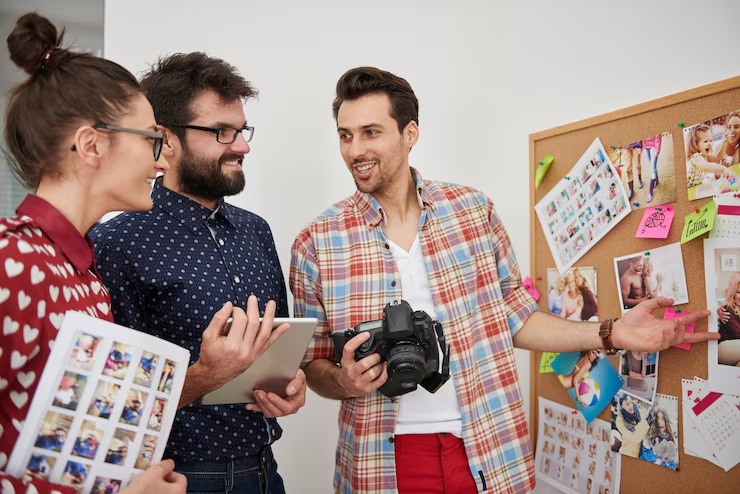
Creative Optimization:
- Developed user-generated content campaigns
- A/B tested video ads vs. photo ads
- Implemented carousel ads for product showcases
- Created Stories ads with behind-the-scenes content
Campaign Architecture:
Prospecting Campaign (40% budget)
├── Lookalike 1% (Best customers)
├── Lookalike 2-3% (Email subscribers)
├── Interest targeting (Competitor audiences)
└── Behavioral targeting (Online shoppers)
Retargeting Campaign (60% budget)
├── Website visitors (last 30 days)
├── Add to cart (last 14 days)
├── Product viewers (last 7 days)
└── Video watchers (75% completion)
Results After 90 Days:
- ROAS increased from $2.40 to $6.80
- Cost Per Click decreased to $0.32
- Conversion rate improved to 3.8%
- Customer acquisition cost reduced by 58%
SaaS Company: B2B Lead Generation That Scales
Productivity software company achieved consistent lead generation growth by adapting Instagram advertising strategies for B2B audiences traditionally focused on LinkedIn and Google Ads.
Strategy Adaptation:
Content Approach:
- Behind-the-scenes team content to humanize the brand
- Customer success stories and case studies
- Product demonstration video ads
- Industry insights and thought leadership
Targeting Strategy:
- Job title targeting: Marketing managers, operations directors
- Interest targeting: Business tools, productivity apps, competitors
- Behavior targeting: B2B decision makers, frequent business travelers
- Custom Audiences: Website visitors, email subscribers, existing customers
Ad Format Selection:
- Video ads for product demonstrations (60% of budget)
- Carousel ads for feature highlights (25% of budget)
- Photo ads for thought leadership content (15% of budget)
Performance Results:
- Cost per lead decreased from $45 to $18
- Lead quality score improved by 67%
- Conversion rates from leads to trials increased to 12%
- ROI on Instagram ads reached 340%

Local Business: Geographic Targeting Mastery
Regional fitness studio chain leveraged Instagram advertising to compete against national franchises by mastering demographic targeting and local community engagement.
Local Optimization Tactics:
Geo-Targeting Strategy:
- 10-mile radius around each location
- Exclude competing gym locations
- Target specific ZIP codes with ideal demographics
- Interest targeting: Local events, community groups
Community-Focused Content:
- Member transformation stories
- Local event participation
- Community partnerships and sponsorships
- Behind-the-scenes trainer content
Seasonal Campaign Adaptation:
- New Year fitness resolutions (January-February)
- Summer body preparation (March-May)
- Back-to-school family fitness (August-September)
- Holiday stress management (November-December)
Results Achieved:
- Cost per acquisition 40% lower than regional competitors
- Brand awareness increased 185% in target markets
- Membership sign-ups increased 67% year-over-year
- Customer loyalty and retention improved significantly
Content Creator: Personal Brand Monetization Strategy
Lifestyle influencer transformed their organic following into sustainable revenue through strategic Instagram advertising that promoted digital products and services.
Monetization Framework:
Audience Segmentation:
- Cold audiences: Interested in lifestyle/wellness content
- Warm audiences: Engaged with organic posts
- Hot audiences: Previous course purchasers or email subscribers
Content Strategy:
- Value-driven educational content to build trust
- Personal story content to create connection
- Product teasers and behind-the-scenes content
- Customer testimonial and success stories
Campaign Objectives:
- Brand awareness: Grow audience and establish authority
- Engagement: Build community and increase loyalty
- Conversions: Drive course sales and email signups
- Retention: Encourage repeat purchases and referrals
Financial Results:
- Monthly revenue increased from $2,500 to $18,000
- Email list growth rate increased 340%
- Course conversion rates improved to 8.5%
- Customer lifetime value grew by 125%

Instagram Advertising Troubleshooting: Common Failures and Fixes
Low Reach Issues (Algorithm Penalties and Recovery)
Instagram’s algorithm can significantly limit your ad reach if it detects quality issues or policy violations.
Common Causes:
- Relevance scores below platform benchmarks
- High negative feedback rates from users
- Ad copy that appears spammy or promotional
- Landing page user experience issues
Recovery Strategies:
- Pause underperforming ad sets immediately
- Create fresh creative assets with different messaging
- Review and improve landing page mobile experience
- Test different audience targeting approaches
- Monitor engagement rates and adjust accordingly
Prevention Measures:
- Regularly refresh creative assets before ad fatigue
- Maintain relevance scores above 6/10
- Follow Instagram’s advertising policies strictly
- Provide genuine value in ad copy and content
High CPC Problems (Bid Strategy Optimization)
Elevated cost per click often indicates auction competition or targeting inefficiencies that drain your ad budget without proportional returns.
Diagnostic Checklist:
Audience Overlap Issues:
- Multiple ad sets targeting similar demographics
- Interest targeting that’s too narrow (under 1 million audience size)
- Competing against your own campaigns in auctions
- Lookalike audiences with high percentage overlaps
Creative Performance Problems:
- Relevance scores consistently below 6/10
- Click-through rates significantly below industry benchmarks
- Ad fatigue from overexposed creative assets
- Visual content that doesn’t match platform best practices
Optimization Solutions:
Bid Strategy Adjustments:
High CPC Scenarios → Recommended Actions
Competition-heavy industries → Switch to impression-based bidding
New accounts with limited data → Use automatic bidding initially
Established campaigns → Implement cost cap bidding
Seasonal peaks → Increase budgets gradually, not drastically
Audience Refinement:
- Consolidate overlapping ad sets into single, broader targeting
- Test broad audience targeting with algorithm optimization
- Exclude converted customers from acquisition campaigns
- Create Custom Audiences for more precise messaging
Poor Conversion Rates (Landing Page Alignment)
Instagram advertising success depends heavily on post-click experience quality and message consistency between ads and landing pages.
Conversion Optimization Framework:
Message Matching:
- Landing page headlines mirror ad copy promises
- Visual consistency between Instagram content and website
- Call-to-action buttons use identical language
- Product images match advertised items exactly
Mobile Experience Requirements:
- Page load times under 3 seconds on mobile devices
- Thumb-friendly navigation and form completion
- Single-column layouts optimized for portrait viewing
- Minimal required form fields (ideally 3 or fewer)
Trust Signal Implementation:
- Customer testimonials and reviews prominently displayed
- Security badges and payment options clearly visible
- Contact information and customer service access
- Social proof elements like user counts or ratings
Technical Optimization:
- META Conversions API properly configured for tracking
- Facebook Pixel firing correctly on all pages
- Cross-device tracking enabled for user journey mapping
- A/B testing different landing page variations

Ad Fatigue Management (Creative Refresh Cycles)
Instagram users develop banner blindness to repetitive creative assets, causing performance degradation over time.
Fatigue Warning Signs:
- Click-through rates declining by 20%+ week-over-week
- Cost per engagement increasing consistently
- Relevance scores dropping below historical averages
- Negative feedback rates increasing on ad content
Creative Refresh Strategy:
Systematic Rotation Schedule:
Creative Lifespan Guidelines:
High-performing ads: Refresh after 7-10 days
Average performers: Refresh after 5-7 days
Poor performers: Pause immediately and replace
Seasonal content: Plan refreshes around calendar events
Asset Development Pipeline:
- Maintain 3-5 creative variations per ad set
- Develop new assets before current ones show fatigue
- A/B test new creative against established winners
- Document performance patterns for future planning
Content Variety Strategies:
- Alternate between photo ads, video ads, and carousel ads
- Mix professional photography with user-generated content
- Vary ad copy tone from educational to promotional
- Test different visual content styles and compositions
Future-Proofing Your Instagram Advertising Strategy
AI Integration Opportunities (Automation vs. Control)
Artificial intelligence transforms Instagram advertising through advanced automated optimization while requiring strategic human oversight for optimal results.
AI-Powered Features:
- Algorithm targeting that learns from user behavior patterns
- Dynamic product ads that automatically showcase relevant inventory
- Automated bidding strategies that optimize for specific objectives
- Real-time adjustments based on performance data
Strategic Implementation:
- Use AI for audience targeting refinement and expansion
- Maintain human control over creative assets and messaging
- Implement automated optimization for budget allocation
- Monitor AI decisions and intervene when necessary
Balance Framework:
AI Automation ↔ Human Control
Budget optimization → AI excels
Creative strategy → Human oversight required
Audience expansion → AI with human validation
Campaign objectives → Human strategic planning
Privacy Updates Impact Assessment (Post-Cookie World)
iOS privacy changes and evolving data protection regulations require adaptive Instagram advertising strategies that prioritize first-party data collection.
Privacy-First Adaptations:
- META Conversions API implementation for accurate tracking
- First-party data collection through email marketing
- Customer loyalty programs that encourage data sharing
- Brand awareness campaigns that reduce attribution dependency
Data Strategy Evolution:
- Focus on lifetime value over immediate conversions
- Develop Custom Audiences from owned data sources
- Implement incrementality testing to measure true impact
- Create engagement-focused campaigns that build relationships
Emerging Format Adoption (Early Mover Advantages)
Instagram advertising continuously evolves with new formats and features that reward early adopters with lower costs and higher reach.
2025 Format Priorities:
- Reels ads continue gaining algorithm preference
- Shopping ads integration with Instagram checkout
- Stories ads with enhanced interactivity features
- AR/VR advertising experiences for immersive brand awareness
Early Adoption Strategy:
- Allocate 10-15% of ad budget to testing new formats
- Monitor Meta Ads Manager announcements for beta features
- Participate in Instagram advertising beta programs
- A/B test new formats against established performers

Instagram Advertising Action Plan: Your Next 30 Days
Week 1: Foundation Setup and Audience Research
Day 1-2: Account Architecture
- Audit existing Instagram advertising campaigns for performance gaps
- Organize campaigns by objective (brand awareness, conversions, retention)
- Implement proper conversion tracking with META Conversions API
- Set up Instagram Analytics monitoring dashboards
Day 3-4: Audience Development
- Create detailed buyer personas based on existing customer data
- Develop Custom Audiences from email lists and website visitors
- Build Lookalike Audiences from high-value customer segments
- Research competitor audiences through Facebook Ad Library
Day 5-7: Competitive Analysis
- Analyze top competitor ad formats and messaging strategies
- Identify market gaps and positioning opportunities
- Document successful creative assets and copy approaches
- Set performance benchmarks based on industry standards
Week 2: Campaign Launch and Initial Optimization
Day 8-10: Campaign Creation
- Launch 3-5 ad sets with different audience targeting approaches
- Test multiple ad formats (photo ads, video ads, carousel ads)
- Set appropriate daily budgets based on audience sizes
- Configure automated optimization for cost per click or conversions
Day 11-14: Performance Monitoring
- Track key performance indicators daily for optimization opportunities
- Pause underperforming ad sets with high cost per engagement
- Scale winning combinations by increasing budgets gradually
- Document successful audience targeting combinations for future use
Week 3: Creative Testing and Performance Analysis
Day 15-17: Creative Optimization
- A/B test different visual content styles and compositions
- Experiment with ad copy variations focusing on different benefits
- Test call-to-action buttons and placement strategies
- Analyze engagement patterns to identify top-performing elements
Day 18-21: Advanced Optimization
- Implement audience layering strategies for more precise targeting
- Test bid strategy adjustments based on performance data
- Optimize landing page experience based on conversion tracking
- Refine campaign objectives based on actual results vs. goals
Week 4: Scale Strategies and Long-Term Planning
Day 22-24: Scaling Preparation
- Identify campaigns ready for budget increases
- Develop additional creative assets to prevent ad fatigue
- Plan audience expansion through broader Lookalike audiences
- Create retargeting campaigns for engaged non-converters
Day 25-28: Implementation and Documentation
- Scale successful campaigns by 25-50% budget increases
- Launch retargeting campaigns targeting website visitors and engagers
- Document successful strategies in social media management playbooks
- Plan creative refresh schedules to maintain performance
Day 29-30: Strategic Review
- Calculate return on investment and cost per acquisition metrics
- Identify top-performing audience targeting and ad formats
- Plan next month’s campaign expansions and new testing priorities
- Set up automated optimization rules for ongoing management

